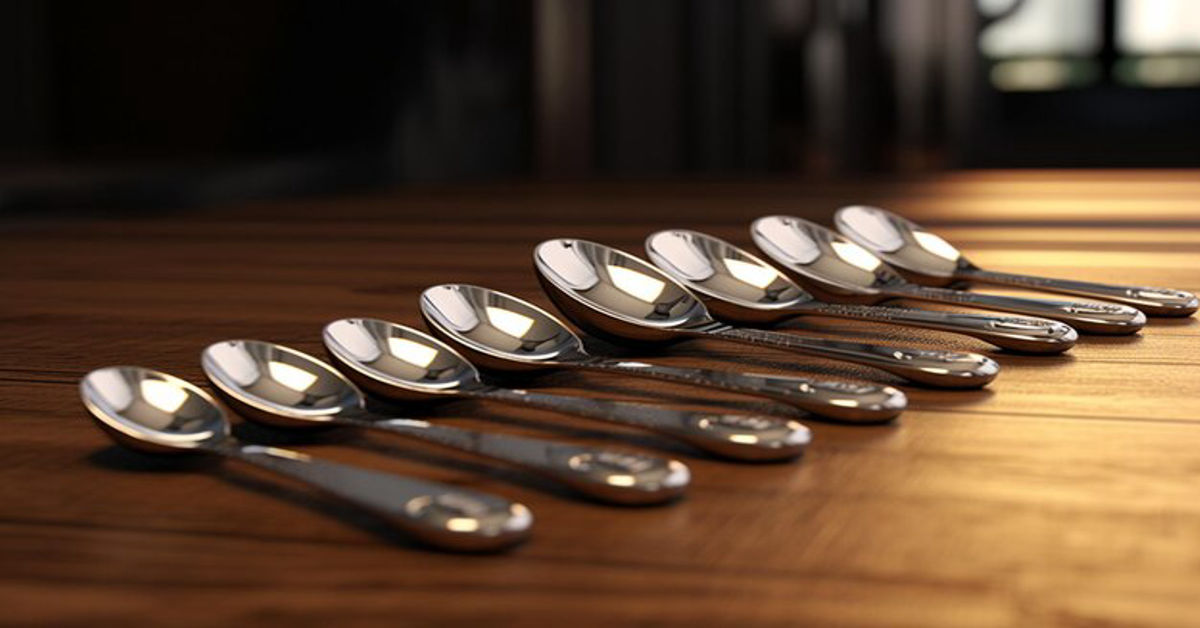In the culinary world precision can be the difference between a dish that delights and one that disappoints. A seemingly simple question—how many teaspoons are in a tablespoon—carries more weight than it appears. The answer is three, but beyond the numbers lies the importance of accuracy. Recipes are carefully balanced formulas, and even the smallest miscalculation in measurements can alter texture, flavor or consistency. For instance adding too much baking powder could cause a cake to rise unevenly, while too little seasoning might dull the taste of a savory dish. Understanding conversions like this not only ensures successful results but also empowers you to confidently adapt recipes without second-guessing.
Teaspoons and tablespoons are more than just units on a measuring spoon set they are building blocks of culinary precision. By mastering their relationship, you create consistency across your cooking, whether preparing a family meal or experimenting with a new recipe. It also enhances efficiency in the kitchen, eliminating the need to search for different tools when you can quickly adjust with what you have. More importantly, this knowledge opens the door to creativity, allowing you to tweak recipes or scale them up and down with ease. In essence, knowing the conversion between teaspoons and tablespoons is a small but mighty step toward mastering the art and science of cooking.
What is a Teaspoon and a Tablespoon ?
A teaspoon is one of the smallest standard units of measurement in cooking. It is often used for spices, herbs, flavorings, and small amounts of liquid or dry ingredients. A tablespoon, on the other hand, is larger and typically used for measuring sauces, oils, butter, or larger portions of seasonings. Both are part of the standardized measuring system used in cooking around the world, although there are slight variations between countries such as the United States, the United Kingdom, and Australia. Understanding these differences is essential for accuracy, especially when following international recipes. While kitchen spoons used for eating may appear similar, they are not reliable for precise measurements, which is why standardized measuring spoons are recommended.
The Exact Conversion: Teaspoons to Tablespoons
In standard US measurements, there are exactly three teaspoons in one tablespoon. This conversion remains consistent across most recipes, making it an essential rule to remember. Knowing this ratio allows you to scale recipes up or down depending on the tools you have available. For instance, if a recipe calls for one tablespoon of sugar but you only have a teaspoon, you would need three teaspoons to match the measurement. Similarly, if you want half a tablespoon, you would use one and a half teaspoons. These small conversions might seem trivial, but they ensure that flavors, textures, and proportions remain as intended.
Basic Conversion Chart
| Measurement | Equivalent in Teaspoons | Equivalent in Tablespoons |
| 1 Teaspoon | 1 | 1/3 Tablespoon |
| 2 Teaspoons | 2 | 2/3 Tablespoon |
| 3 Teaspoons | 3 | 1 Tablespoon |
| 6 Teaspoons | 6 | 2 Tablespoons |
| 9 Teaspoons | 9 | 3 Tablespoons |
Why This Conversion Matters in Cooking
Small differences in measurement can dramatically change the outcome of a dish. For example, adding too much salt because you confused teaspoons with tablespoons can ruin a meal. Likewise, in baking, which requires precision, even a slight miscalculation can affect texture and structure. A cake may become too dense, a cookie too dry, or bread may fail to rise properly. The science of cooking depends on balance, and that balance starts with correct measurements. Understanding how many teaspoons are in a tablespoon ensures accuracy, consistency, and reliability in the kitchen. Beyond flavor, correct measurements also contribute to portion control and nutritional accuracy, which are important for health-conscious individuals.
International Differences in Measurements
Not every country uses the same standard for teaspoons and tablespoons. For instance, in the United States, one tablespoon equals 14.79 milliliters, while in Australia, a tablespoon equals 20 milliliters. This difference can lead to inconsistencies when following recipes from different regions. Knowing these distinctions helps cooks adapt recipes properly without compromising taste or texture. For those who frequently cook international dishes, keeping a conversion chart handy can save a great deal of frustration. International measurements are especially important in professional kitchens where precision is non-negotiable.
International Comparison of Tablespoon Measurements
| Country | 1 Tablespoon Equivalent | In Milliliters | In Teaspoons (Approx) |
| United States | 1 Tablespoon = 3 tsp | 14.79 ml | 3 tsp |
| United Kingdom | 1 Tablespoon = 3 tsp | 15 ml | 3 tsp |
| Australia | 1 Tablespoon = 4 tsp | 20 ml | 4 tsp |
| Canada | 1 Tablespoon = 3 tsp | 15 ml | 3 tsp |
| New Zealand | 1 Tablespoon = 4 tsp | 20 ml | 4 tsp |
Practical Examples of Teaspoon to Tablespoon Conversions
Imagine you are baking cookies, and the recipe requires two tablespoons of sugar. If you only have a teaspoon, you need to measure six teaspoons. Similarly, if a recipe requires one and a half tablespoons of olive oil, that equals four and a half teaspoons. By understanding and practicing these conversions, you avoid confusion and build confidence in your cooking process. Many chefs also prefer working with teaspoons for spices because it allows for finer adjustments in flavor.
Measuring Dry vs. Liquid Ingredients
Teaspoons and tablespoons measure both dry and liquid ingredients, but the method differs slightly. For dry ingredients like flour or sugar, it is important to level off the spoon to ensure accuracy. Scooping directly from a bag often compresses the ingredient, leading to excess measurement. For liquids like oil or vanilla extract, a smooth pour to the rim of the measuring spoon ensures proper measurement. In both cases, accuracy matters because the wrong quantity can affect the recipe’s success. Professional chefs and bakers often stress the importance of measuring carefully, especially in baking where precision is key.
Common Ingredients Conversion Examples
| Ingredient | 1 Tablespoon Equivalent | 3 Teaspoons Equivalent |
| Sugar | 12.5 grams | 12.5 grams |
| Salt | 18 grams | 18 grams |
| Butter | 14 grams | 14 grams |
| Olive Oil | 14.79 ml | 14.79 ml |
| Baking Powder | 14 grams | 14 grams |
Tools for Accurate Measurement
Using proper tools is the most reliable way to ensure correct conversions. Standard measuring spoons are inexpensive and widely available, making them an essential kitchen tool. Digital kitchen scales can also be helpful, especially for baking, where weight-based measurements are often more accurate than volume. When measuring liquids, glass or plastic measuring cups with clear markings provide better accuracy than spoons alone. Developing the habit of using the right tools reduces errors and ensures consistent results.
Tips for Remembering the Conversion
Many people find it helpful to memorize the simple rule: one tablespoon equals three teaspoons. You can also think of it visually. Imagine filling a tablespoon with three small spoonfuls; this mental image makes the conversion easier to recall. Some cooks create quick reference cards for their kitchen or keep a chart on the refrigerator for convenience. With repetition and practice, these conversions soon become second nature.
Common Mistakes to Avoid
One of the most common mistakes is confusing tablespoons with teaspoons because their abbreviations look similar. Teaspoon is usually abbreviated as tsp, while tablespoon is abbreviated as tbsp. Mixing them up can lead to recipes with too much or too little of an ingredient. Another mistake is using regular cutlery spoons instead of standardized measuring spoons. Household spoons vary in size and can lead to significant discrepancies in recipes. By avoiding these mistakes, you maintain the intended flavor and texture of your dish.
Conclusion
Understanding how many teaspoons are in a tablespoon is a fundamental skill in cooking and baking. This simple yet powerful conversion ensures accuracy, consistency, and confidence in the kitchen. By remembering the basic rule, using proper tools, and considering international differences, you can easily adapt any recipe. From everyday cooking to gourmet baking, precise measurement supports the balance of flavors and guarantees successful results. Next time you encounter a recipe that calls for tablespoons or teaspoons, you will be equipped with the knowledge to measure accurately and cook with confidence.
Frequently Asked Questions
1. How many teaspoons are in a tablespoon in the US?
In the United States, one tablespoon equals three teaspoons.
2. Is the measurement the same worldwide?
No, in some countries like Australia, one tablespoon equals four teaspoons.
3. Can I use a regular spoon for measurement?
It is not recommended, as household spoons vary in size. Standardized measuring spoons are more accurate.
4. Why is accurate measurement important in baking?
Baking is a science that relies on precise ratios of ingredients. Incorrect measurements can ruin texture, flavor, and structure.
5. How can I quickly convert tablespoons to teaspoons without a chart?
Remember the simple rule: one tablespoon equals three teaspoons in most countries.







